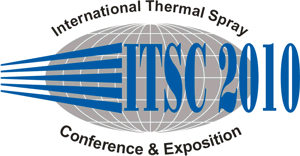
|
2034 |
|
Tuesday, May 04, 2010, Sophia Room 11:00 AM Properties 1 |
|
Thermophysical studies on thermally sprayed tungsten carbide-cobalt coatings |
|
Sven Thiele* / Fraunhofer Institute for Ceramic Technologies and Systems, Germany Lutz-Michael Berger/ Fraunhofer Institute for Material and Beam Technology, IWS, Germany Joerg Spatzier/ Fraunhofer Institute for Material and Beam Technology, IWS, Germany Klaus Jaenicke-Roessler/ Fraunhofer Institute for Ceramic Technologies and Systems, IKTS, Germany Kerstin Sempf/ Fraunhofer Institute for Ceramic Technologies and Systems, IKTS, Germany |
|
Thermally sprayed hardmetal-like coatings are commonly used for wear protection (abrasion, erosion). Recently, it was shown that these coatings can be used for fatigue loaded tools and structural components with high contact loads in service like gear wheels or camshafts. Also coating of tools for metal forming shows an promising application potential. For these new applications tailored feedstock materials and modern thermal spray processes were developed and used. Furthermore guidelines for the construction of components that have to meet the requirements of the subsequent coating and computation models for the characterization of the operating behaviour, reliability and life time of the coated components are missing. Therefore, for effectiveness also modelling should be included in the development. Unfortunately there is a significant lack of reliable data for thermal spray coatings to be used for modelling purposes. In particular, this relates to the thermophysical data. As an example, in the present work thermophysical data of WC-17Co-coatings from room temperature up to 700 °C were determined. To compute the heat conductivity for the coatings the thermal diffusivities, density functions, specific heat capacities and technical expansion coefficients in the specified temperature range were measured. All measurement were performed twice (as-sprayed and after the first thermal cycle) in order to take the structural and compositional changes into account. The phase transformations occurred during heat treatment were also investigated. |